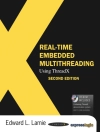This peer-reviewed book explores the methodologies that are used for effective research, design and innovation in the vast field of millimeter-wave circuits, and describes how these have to be modified to fit the uniqueness of high-frequency nanoelectronics design. Each chapter focuses on a specific research challenge related to either small form factors or higher operating frequencies. The book first examines nanodevice scaling and the emerging electronic design automation tools that can be used in millimeter-wave research, as well as the singular challenges of combining deep-submicron and millimeter-wave design. It also demonstrates the importance of considering, in the millimeter-wave context, system-level design leading to differing packaging options. Further, it presents integrated circuit design methodologies for all major transceiver blocks typically employed at millimeter-wave frequencies, as these methodologies are normally fundamentally different from the traditionaldesign methodologies used in analogue and lower-frequency electronics. Lastly, the book discusses the methodologies of millimeter-wave research and design for extreme or harsh environments, rebooting electronics, the additional opportunities for terahertz research, and the main differences between the approaches taken in millimeter-wave research and terahertz research.
Table des matières
Device Scaling: Going from Micro- to Nano-Electronics.- Electronic Design Automation for Millimeter-Wave Research and Design.- Millimeter-Wave Substrates and System-Level Approach in Millimeter-Wave Research and Design.- Methodologies for Millimeter-Wave Circuit Design.- Methodologies for Millimeter-Wave Circuit Design in Extreme Environments.- Further Device Scaling: From Nanoelectronics to Future Technologies.- Getting Ready for Terahertz Electronics.
A propos de l’auteur
Mladen Božanić (Ph.D, University of Pretoria), is a Senior IC Design Engineer responsible for mixed-mode design and design-for-test at Azoteq, South Africa and part-time researcher at the Department of Electrical and Electronic Engineering Science, University of Johannesburg. He is a Specialist Editor of South African Institute of Electrical Engineers (SAIEE) Africa Research Journal for the field of microelectronics and has authored or co-authored over 25 peer-reviewed contributions.
Prof Saurabh Sinha obtained his B.Eng, M.Eng, and Ph.D. degrees in Electronic Engineering from the University of Pretoria. As an established researcher, rated by the National Research Foundation (NRF), he has authored or co-authored over 110 publications in peer-reviewed journals and at international conferences. Prof Sinha is the Deputy Vice-Chancellor: Research and Internationalisation, University of Johannesburg. Prof Sinha served the 2014-2015 IEEE Board of Director and as IEEE Vice-President: Educational Activities.












